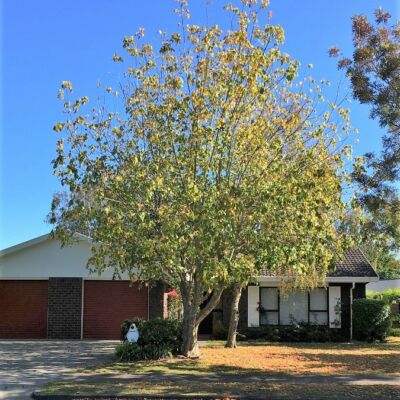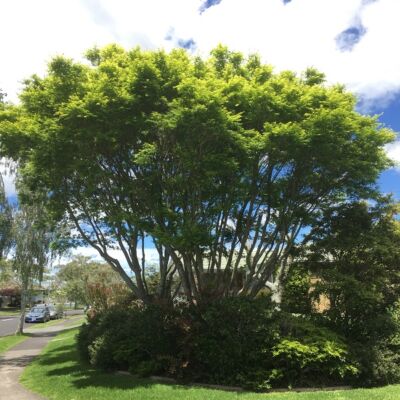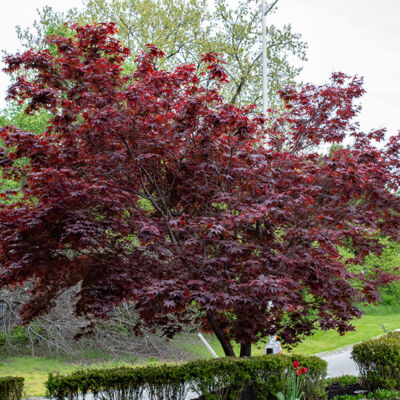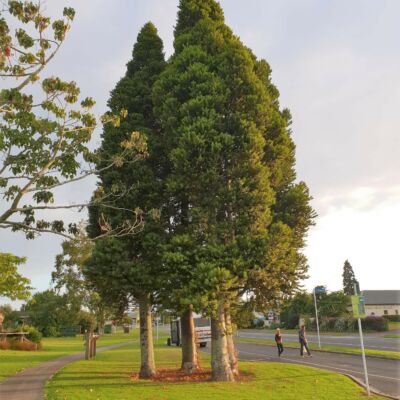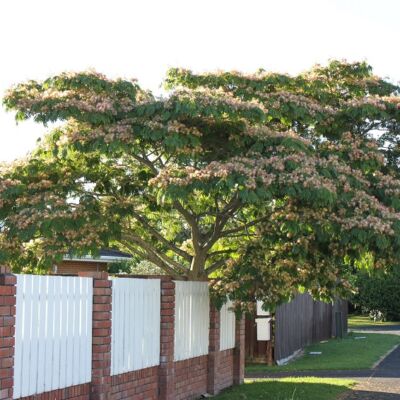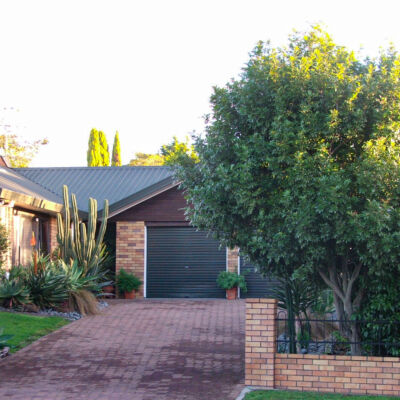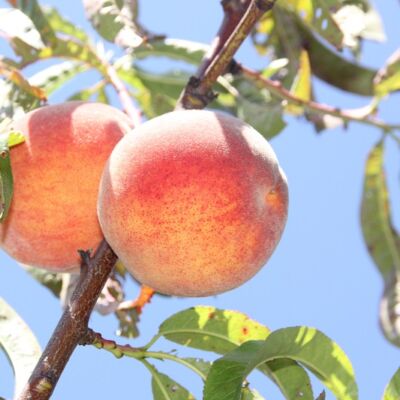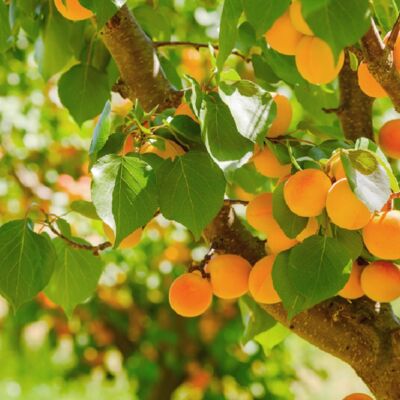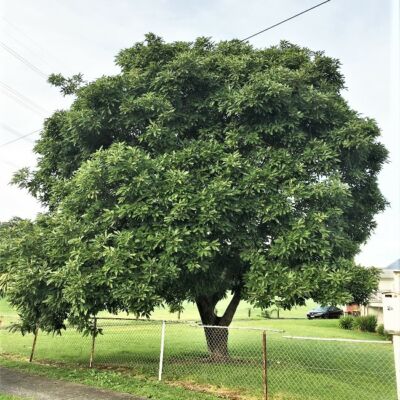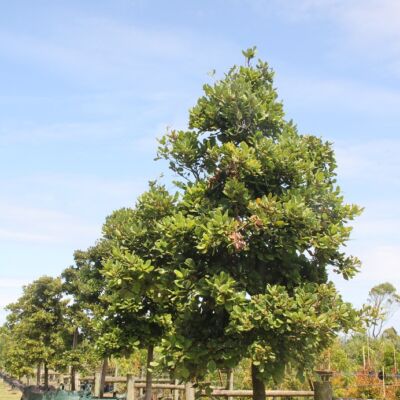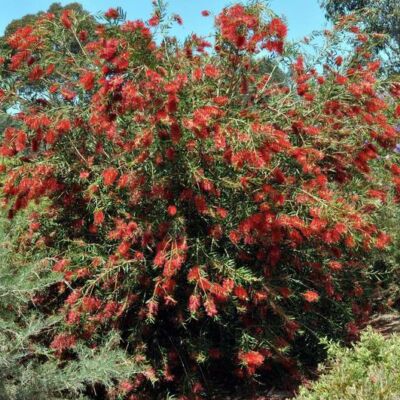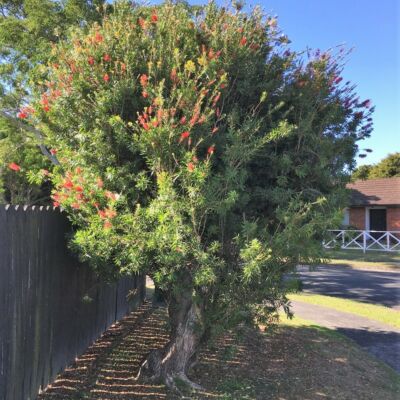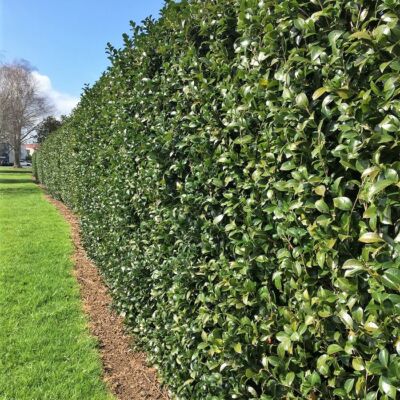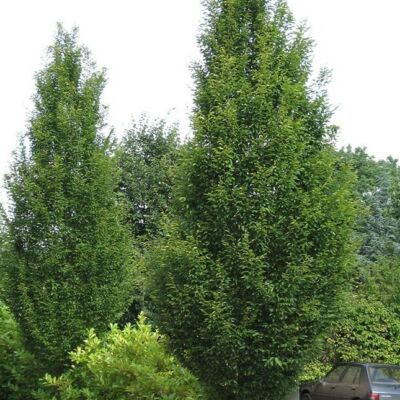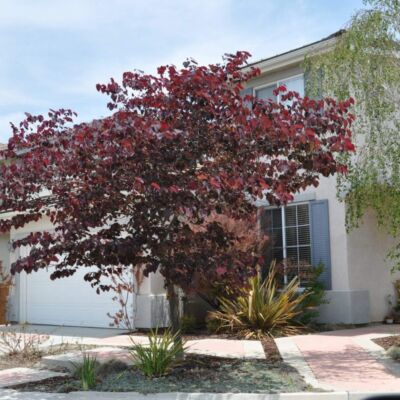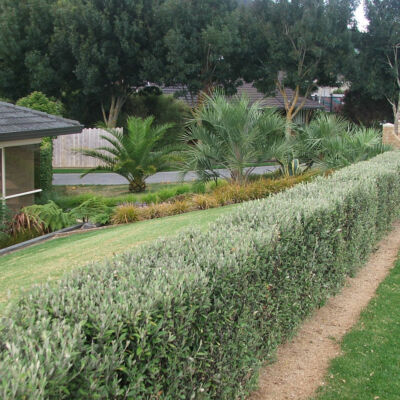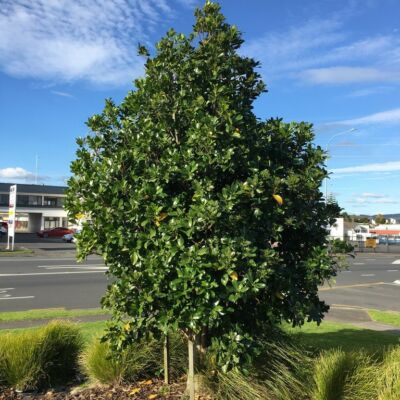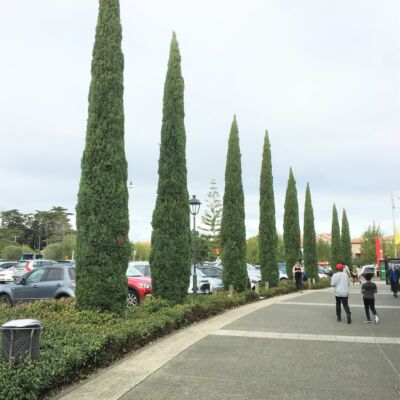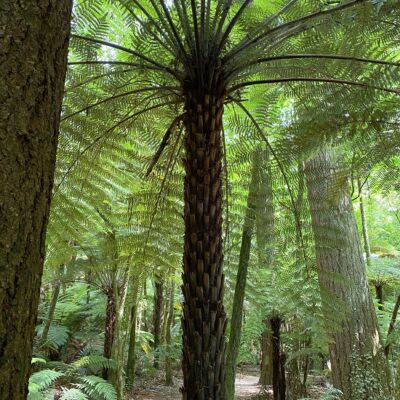|
In spring clear butter-yellow leaves emerge becoming a lime-green shade during summer. A striking small tree for spring and early summer colour. Fast growing and responds to pruning to maintain shape. Excellent shade tree. Good alternative for Ulmus (Elm Trees) in Auckland due to Dutch Elm Disease. Originates from Duncan and Davies NZ. |
| Height x Width | 6 x 4 |
| Height Range | Medium 5-10m |
| Growth Rate | Fast |
| Plant Type | Tree |
| Shape / Habit | Round |
| Country of Origin | New Zealand |
| Similar to Consider | Robinia Freesia, Ginkgo, Gleditsia Sunburst, |
|
|
| Leaf Colour | Lime Yellow |
| Deciduous Leaf Colour | Yellow |
|
|
| Flower Colour | Pink Catkins |
| Fragrant? | No |
|
|
| Specimen | Yes |
| Good Shade Tree | Yes |
| Accent | Yes |
| Note: Growth, height and grade information are given in good faith but are subject to natural variables beyond our control. | |
Most trees will fit into this category. Its really referring to the soil structure and the balance between enough water and air around the roots to allow all the right chemical reactions to take place to enable a tree (or any plants) to take up nutrients and grow well. Some trees though will tolerate limits outside of this category though. See Dry or wet soil
-
-
- Description
One of the most beautiful small trees for the ornamental landscape. From its young spring growth through summer the leaves are soft green. During autumn it becomes a display of colour when leaves turn brilliant shades of scarlet / yellow or orange. It is perfectly suited as a specimen tree an accent in a mixed border or in a container on the patio. Shelter from strong wind. Height x Width 5 x 4 Range Medium 5-10m Growth Rate Moderate Plant Type Tree Shape Habit Round Country of Origin Japan Similar to Consider Other Palmatum Acers, Liquidambars, - Leaf
Leaf Colour Green Deciduous Leaf Colour Orange, Red, Yellow - Flower
Flower Colour Nil - Uses
Specimen Yes Good Shade Tree? Yes Note: Growth, height and information are given in good faith but are subject to natural variables beyond our control. -
- Description
Grows strongly into a more upright tree with blackish red stems and deepest purple, red, foliage, holding right through summer. Fiery red/purple autumn colours and seed capsules. Small to medium tree excellent for smaller spaces. Height x Width 5 x 3 Height Range Medium 5-10m Growth Rate Moderate Plant Type Tree Shape / Habit Round Country of Origin North America Similar to Consider Cercis Forest Pansy, Prunus Thundercloud, Fagus Riversii, Fagus Sylv Purp, Acer Tamuke Yama, Fraxinus Raywoodii, - Leaf
Leaf Colour Red Deciduous Leaf Colour Red - Flower
Flower Colour Nil - Uses
Specimen Yes Accent Yes Note: Growth, height and information are given in good faith but are subject to natural variables beyond our control. -
- Description
A slow growing native tree that maintains its juvenile, pyramidal form for up to 50 years. Narrow leathery leaves are an attractive Bronze-green colour. Smooth grey bark turning scaly when mature. Adult trees form a straight-trunked stately round headed tree. Grows best in rich, fertile, moist, well-draining soil and to apx 10m in 30 years. An excellent statement tree. Height x Width 10+ Height Range Tall 10+ Growth Rate Slow Plant Type Tree Shape / Habit Narrow Country of Origin New Zealand Similar to Consider Rimu, Kahikatea - Leaf
Leaf Colour Green / brown - Flower
Flower Colour Nil but has cones - Uses
Specimen Yes Accent Yes Note: Growth, height and information are given in good faith but are subject to natural variables beyond our control. -
- Description
A quick growing, smaller, spreading tree. Rich green, ferny leaves. Flowers during summer on top of leaves, open as rounded fluffy brushes of pink. Tolerates hot dry areas once established. Excellent shade tree. Height x Width 5 x 4 Height Range Medium 5-10m Growth Rate Fast Plant Type Tree Shape / Habit Spreading Country of Origin Asia, China Similar to Consider Jacaranda, Gleditsia, - Leaf
Leaf Colour Green Deciduous Leaf Colour Brown - Flower
Flower Colour Pink Fragrant? No - Uses
Specimen Yes Good Shade Tree? Yes Note: Growth, height and information are given in good faith but are subject to natural variables beyond our control. -
- Description
One of the most popular native trees with almost black bark and glossy dark green leaves which are made up of several serrated leaflets. Sprays of rusty woolly petal-less flowers occur in early summer and present a curious reddish-brown effect. These are followed by small red fruit which attract birds. Prefers sheltered conditions in full sun in rich free-draining soil. Ideal as a specimen tree. Will grow apx 7 x 3m Height x Width 7 x 3 Height Range Medium 5-10m Growth Rate Moderate Plant Type Tree Shape / Habit Round Country of Origin New Zealand Similar to Consider Alectryon grandis, Vitex Lucens, Dysoxylum Spectabile, Planchonella costata, Myrsine salicina Leaf Leaf Colour Green - Flower
Flower Colour Red Fragrant? No - Uses
Specimen Yes Good Shade Tree? Yes Screening Yes Note: Growth, height and grade information are given in good faith but are subject to natural variables beyond our control. -
Apple TREES are cultivated worldwide and are the most widely grown species in the genus Malus. The apple is a deciduous tree, generally standing 2 to 4.5m tall having its origins in Central Asia. When cultivated, the size, shape and branch density are determined by rootstock selection and trimming method. LEAVES are dark green simple ovals with serrated margins. Blossoms are produced in spring at the same time as leaves. FLOWERS are generally white with a pink tinge. The FRUIT matures in late summer or autumn. Different CULTIVARS are bred for various tastes and use, including cooking, eating raw and cider production. Sometimes hand thinning is necessary to avoid overstressing the tree, which may result in a poor crop the following year. However this should not be done until mid-December when the natural fall is complete. ROOTSTOCKS are used to control speed of growth and the size of the resulting tree allowing for easier harvesting. Apple Root Stock: M26: Very Dwarf tree, Under 3.0m M.9 Dwarf tree, To Apx 3.0m, Suits well drained fertile soils. Requires support system: MM106 Semi dwarf tree, To Apx 4.5m. Good on most soils except poorly drained soils MM 793 Larger tree, To Apx 6.0m. Better suited to difficult soils (heavy or clay) Northern Spy Semi dwarf tree. To Apx 3-5m. Wetter ground and Clay. Resistance to woolly aphids. Harvest Season (Apx): EARLY = Jan – Feb. MID = Feb – March. LATE = April – May Make enquiries as to which varieties we have available now or see our online catalogue.
-
Originally domesticated in China, apricots are grown successfully around the world. These small TREES are a manageable size for the home orchard growing to around 4-5m tall. FLOWERS appear in spring with FRUIT (a drupe similar to a small peach, ranging in colour from yellow to orange) ready to harvest Dec - Feb. As they are self fruiting, you typically don't need two apricot trees to produce fruit. They are relatively easy to grow and will produce loads of fruit year after year that can be enjoyed fresh from the tree, made in to jam, bottled or dried. Apricots we supply are better suited to warmer climates. HARVEST is from Dec - Feb. Make enquiries as to which varieties we have available now or see our online catalogue.
-
A handsome, fast growing, subtropical evergreen TREE with large emerald green LEAVES that forms a thick canopy. FLOWERS September to December. FRUIT range in size and shape from round cannonball to pear like. All varieties are self-fertile though the trees will produce more and better fruit if cross pollinated. To get fruiting trees it is highly recommended to get a grafted tree and then generally require a few years to mature before fruiting. Stone grown trees may not produce fruit. Requires free draining deep soil and protection from frosts and cold winds. HARVEST September to April. from Grows Apx 6 x 4m. Make enquiries as to which varieties we have available now or see our online catalogue.
-
- Description
Handsome NZ Native stately straight and erect trunk has smooth brown bark. Eventually grow to a large canopy tree. Small flowers appear in panicles in spring followed by attractive purple fruit in autumn which are the favourite of the Native Kereru pigeon. Likes rich deeply worked well drained soil. Height x Width 20 x 6 Height Range Tall 10+ Growth Rate Moderate Plant Type Tree Shape / Habit Conical Country of Origin New Zealand Similar to Consider Planchonella costata, Alectryon Excelsa - Leaf
Leaf Colour Green - Flower
Flower Colour Orange Fragrant? No - Uses
Specimen Yes Bird Feeding Yes Note: Growth, height and grade information are given in good faith but are subject to natural variables beyond our control. -
- Description
A vigorous small tree with long, narrow green leaves with slightly pendulous branches. Bright red flower spikes carried in clusters over spring and early summer provides nectar for bees and birds. Tolerates coastal, wind, clay, sandy or dry once established. Height x Width 3 x 2 Height Range Small 1-5m Growth Rate Fast Plant Type Tree Shape / Habit Round Country of Origin Australia Similar to Consider C. Red Clusters, Salignus (Yellow) Citrinus Violetii (Violet) - Leaf
Leaf Colour Green - Flower
Flower Colour Red Fragrant? No - Uses
Screening / Shelter Yes Hedging Yes Bird Feeding Yes Note: Growth, height and grade information are given in good faith but are subject to natural variables beyond our control. -
- Description
Vigorous large shrub, new leaves emerge a silvery-pink turning to mid- green. Masses of red bottlebrush flowers with gold anthers appear in spring and autumn. Tolerant of poor dry soils once established, though prefers some moisture. Provides nectar for bees and birds. Good for hedging. Height x Width 3 x 2 Height Range Small 1-5m Growth Rate Moderate Plant Type Shrub Shape / Habit Round Country of Origin Australia Similar to Consider Kings Park Special, Salignus (Yellow) Citrinus Violetii (Violet) - Leaf
Leaf Colour Green - Flower
Flower Colour Red Fragrant? No - Uses
Screening Yes Hedging Yes Bird Feeding Yes Fruit Producing Note: Growth, height and grade information are given in good faith but are subject to natural variables beyond our control. -
- Description
Pure white medium semi-double. Slight fragrance early season. Upright rounded form. Trims well so ideal for hedging and topiary. Plant in full sun or dappled shade in well drained acidic soil. Prune after flowering to maintain shape. Height x Width 2.5 x 2.0 Height Range Small 1-5m Growth Rate Moderate Plant Type Shrub Shape / Habit Round Country of Origin China Similar to Consider Other Camellias, Laurus Nobilis, Prunus lusitanica, Michelia Figo, Syzygium resilience, Pittosporums, Corokia, Griselinia, Ficus, Ilex largo, Olea El Greco, Eugenia Ventinatii - Leaf
Leaf Colour Green - Flower
Flower Colour White Fragrant? Yes - Uses
Hedging Yes Note: Growth, height and grade information are given in good faith but are subject to natural variables beyond our control. -
- Description
A narrow upright form of Carpinus Betulus. Gradually widening with maturity. Oval ribbed green leaves that have good autumn colouring of yellows and oranges eventually turning brown and remaining on the tree for long periods over winter. Excellent Street or Avenue tree or shelter belt if planted closer together. Very hardy Height x Width 8 x 3 Height Range Medium 5-10m Growth Rate Moderate Plant Type Tree Shape / Habit Columnar Country of Origin Europe Similar to Consider Betula var. Cupressus totem, Liriodendron tulipifera fastigiata, Olea El Greco, Knightia Excelsa, Acer Bowall, Poplar crow’s nest, Quercus robur fastigiata - Leaf
Leaf Colour Green Deciduous Leaf Colour Golden Yellow - Flower
Flower Colour Insignificant - Uses
Accent Yes Note: Growth, height and grade information are given in good faith but are subject to natural variables beyond our control. -
- Description
A small open habit tree with a broad round head. Heart shaped leaves are purple red and appear after the magenta flowers bloom on bare branches in early spring. Excellent small specimen tree suited to smaller gardens. Tolerates Clay soil but avoid wet or poorly drained soils. Deciduous. Height x Width 4 x 3 Height Range Small 1-5m Growth Rate Moderate Plant Type Tree Shape / Habit Spreading Country of Origin North America Similar to Consider Prunus Thundercloud, Fagus Riversii, Fagus Sylv Purp, Acer Tamuke Yama, Fraxinus Raywoodii, Acer Bloodgood. - Leaf
Leaf Colour Purple Red Deciduous Leaf Colour Purple Red - Flower
Flower Colour Magenta Fragrant? No - Uses
Specimen Yes Accent Yes Note: Growth, height and information are given in good faith but are subject to natural variables beyond our control. -
- Description
A slender growing shrub with rich green foliage and masses of starry yellow flowers early summer followed by dark red berries. Attracts birds. Ideal as a hedge trims well. Will tolerate dry coastal exposed or windy sites once established. Height x Width 2 x 1.2 Height Range Small 1-5m Growth Rate Moderate Plant Type Shrub Shape / Habit Round Country of Origin New Zealand Similar to Consider Syzygium resilience, Michelia Figo, Camellias, Pittosporums, Griselinia, Ficus, Ilex largo, Olea El Greco, Eugenia Ventinatii - Leaf
Leaf Colour Green - Flower
Flower Colour Yellow Fragrant? No - Uses
Hedging Yes Bird Feeding Yes Note: Growth, height and grade information are given in good faith but are subject to natural variables beyond our control. -
- Description
A moderately fast-growing tree with large glossy green leaves. Small creamy-green flowers in September followed by large orange fleshy drupes in December. Very hardy withstanding strong winds coastal conditions and drought. An excellent specimen tree able to be trimmed to shape. Height x Width 15 x 8 Height Range Tall 10+ Growth Rate Moderate Plant Type Tree Shape / Habit Round Country of Origin New Zealand Similar to Consider Alectryon Excelsa, Planchonella Costata, Magnolia grandiflora types, Vitex Lucens - Leaf
Leaf Colour Green - Flower
Flower Colour Cream Fragrant? No - Uses
Specimen Yes Good Shade Tree? Yes Screening / Shelter Yes Bird Feeding Yes Note: Growth, height and grade information are given in good faith but are subject to natural variables beyond our control. -
- Description
Selected narrow growing form with bluish-green foliage. Cutting-grown for uniform narrow columnar shape and even growth rate. Foliage stays together and doesn’t “fall out” More resistant to canker. Prefers dryish soil and no manuring. Height x Width 10 x 2 Height Range Medium 5-10m Growth Rate Fast Plant Type Tree Shape / Habit Narrow Country of Origin Europe Similar to Consider Thuja Smaragd, Liriodendron tulipifera fastigiata, Olea El Greco, Knightia Excelsa, Acer Bowall, Poplar crow’s nest, Quercus robur fastigiata, Carpinus Betulus fastigiata - Leaf
Leaf Colour Green glaucus - Flower
Flower Nil - Uses
Accent Yes Note: Growth, height and information are given in good faith but are subject to natural variables beyond our control. -
- Description
Iconic New Zealand native fern and the inspiration of the national Emblem. A tree fern with green-stalked soft leaves to apx 4m long that are distinctly silver on the underside. Trunk can grow to 10m tall. Prefers a more sheltered position as they generally grow under larger native NZ Trees. Height x Width 8 x 3 Height Range Medium 5-10m Growth Rate Slow Plant Type Palm Shape / Habit Palm Country of Origin New Zealand Similar to Consider Cyathea medularis, Dicksonia squarrosa, Dicksonia fibrosa - Leaf
Leaf Colour Green - Flower
Flower Colour Nil - Uses
Specimen Yes Accent Yes Note: Growth, height and grade information are given in good faith but are subject to natural variables beyond our control. -
- Description
The tallest and most common of NZ’s tree ferns. Slender, black trunk to apx 15m with hexagonal patterns from old fronds, large crown of gracefully arching fronds up to 5m. Found primarily in sheltered coastal and lowland forest throughout much of the North Island. They will grow in full sun but still prefer to have a sheltered position with a cool moist root run. Height x Width 15 x 5 Height Range Tall 10m+ Growth Rate Moderate Plant Type Palm Shape / Habit Palm Country of Origin New Zealand Similar to Consider Cyathea dealbata, Dicksonia squarrosa, Dicksonia fibrosa - Leaf
Leaf Colour Dark Green - Flower
Flower Colour Nil - Uses
Specimen Yes Accent Yes Note: Growth, height and grade information are given in good faith but are subject to natural variables beyond our control.
